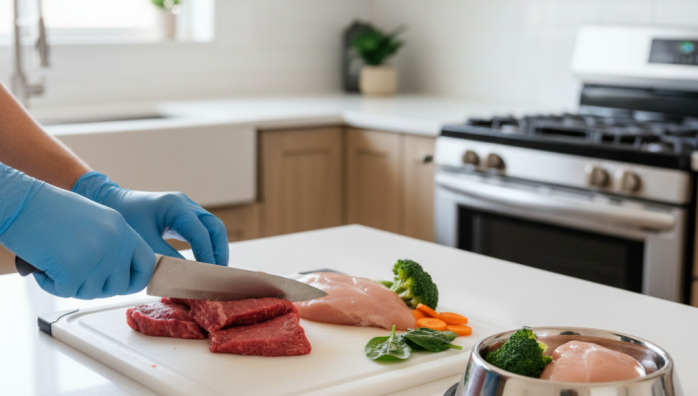Safe Meat Handling for Raw Pet Diets
by admin in Pet Care Basics 15 - Last Update November 25, 2025

When I first ventured into the world of raw feeding, my biggest hang-up wasn\'t the food itself, but the fear of contamination. I had visions of salmonella lurking on every surface of my kitchen. Honestly, it almost stopped me from starting. But over the years, I\'ve developed a simple, almost second-nature routine that keeps my pets healthy and my home safe. It’s not about being paranoid; it\'s about being smart and consistent.
The golden rule: Treat it like your own food
This was my first \'aha\' moment. The safety principles for handling raw meat for your family\'s dinner are the exact same ones you should apply to your pet\'s. If you wouldn\'t prepare your own chicken on a wooden board and then chop a salad on it, you absolutely shouldn\'t do the equivalent for your pet\'s food. Thinking this way simplifies everything.
My non-negotiable kitchen safety steps
I’ve boiled down my entire process into a few key habits. Sticking to these has given me complete peace of mind.
1. Create a dedicated prep zone
I have a specific corner of my counter designated for pet food prep. More importantly, I use a separate, color-coded, non-porous cutting board (mine is red) that is *only* for their raw meals. It never gets mixed up with our human-use boards. This one simple step is probably the most effective way to prevent cross-contamination.
2. Master the thaw plan
I learned the hard way that leaving meat to thaw on the counter is a bad idea, as it allows bacteria to multiply unevenly. My go-to method is to move the next day\'s frozen portion from the freezer to the refrigerator the night before. It thaws slowly and safely at a controlled temperature. I always place it in a container to catch any drips.
3. Cleanliness is everything
Before and after I handle the raw meat, I wash my hands thoroughly with soap and hot water. After prepping, I immediately wash the cutting board, knives, and any utensils in hot, soapy water. I then wipe down the counter area with a food-safe disinfectant spray. I don\'t let anything sit.
4. Use smart storage solutions
I portion out meals for several days at a time and store them in individual, airtight, freezer-safe containers. This minimizes daily handling. For the portions in the fridge, I use glass or stainless steel containers clearly labeled for the pets. This keeps their food sealed away from our own.
Beyond the counter: Bowl and feeding area hygiene
The safety doesn\'t stop once the food is prepped. I\'m a firm believer in using stainless steel or ceramic bowls. They are non-porous, unlike plastic which can develop tiny scratches that harbor bacteria. After every single meal, I wash the bowl immediately in the dishwasher or with hot, soapy water. I also regularly wipe the floor around their feeding station.
Ultimately, handling raw food for your pet safely is all about creating good habits. It might feel like a lot at first, but after a week or two, it becomes an effortless routine. For me, the incredible health benefits I\'ve seen in my own dogs make these few extra steps completely worthwhile. As always, this is the routine that works for my pack, but I always encourage you to chat with your holistic vet to create the perfect plan for your own pet.














